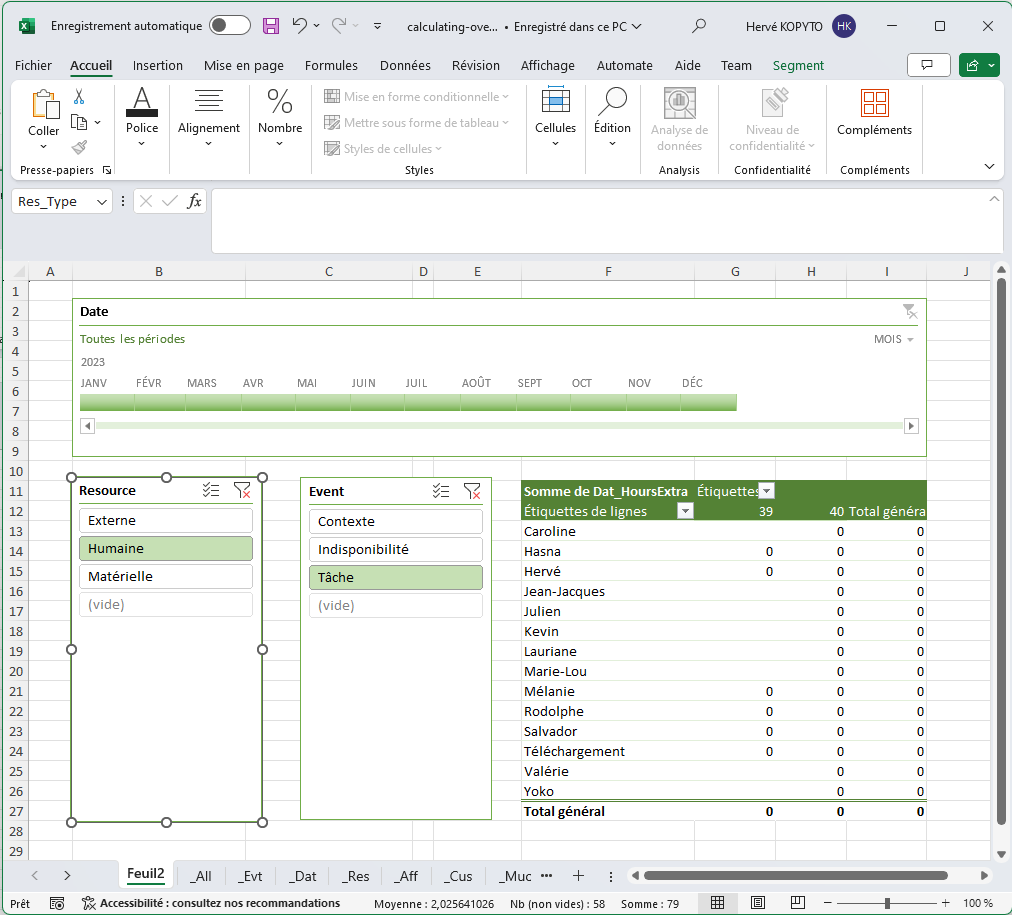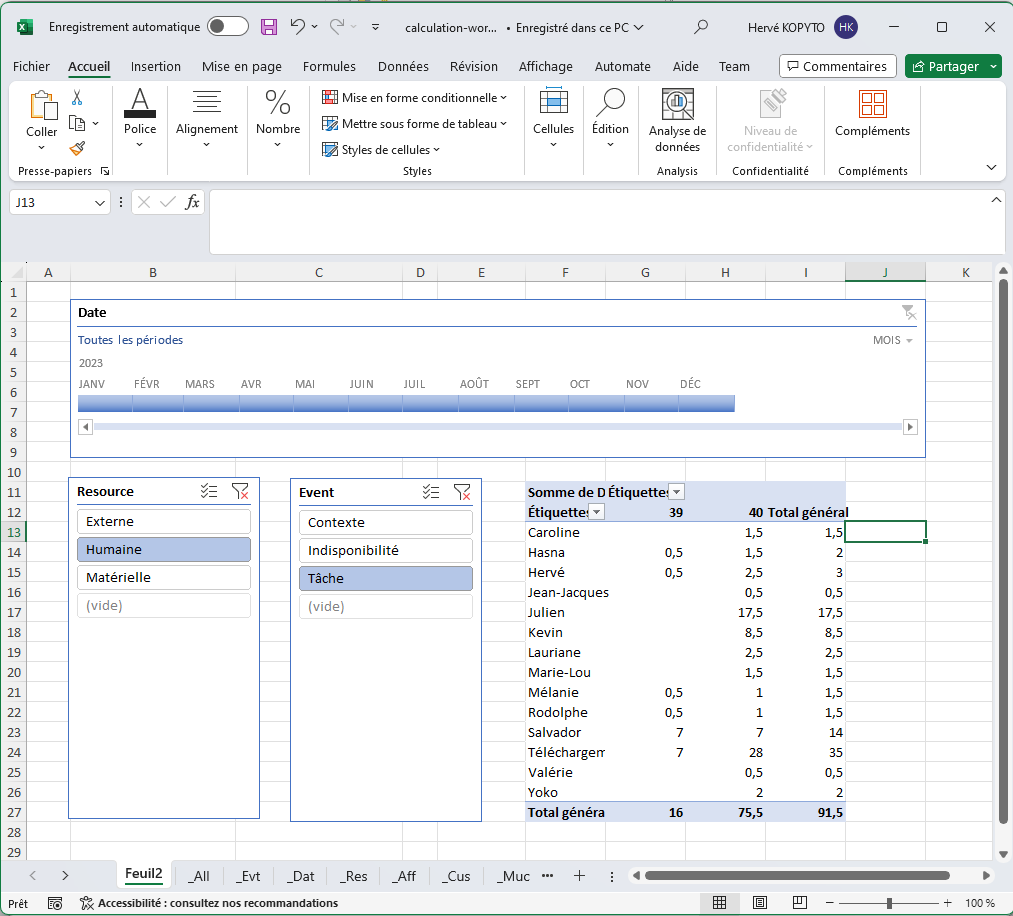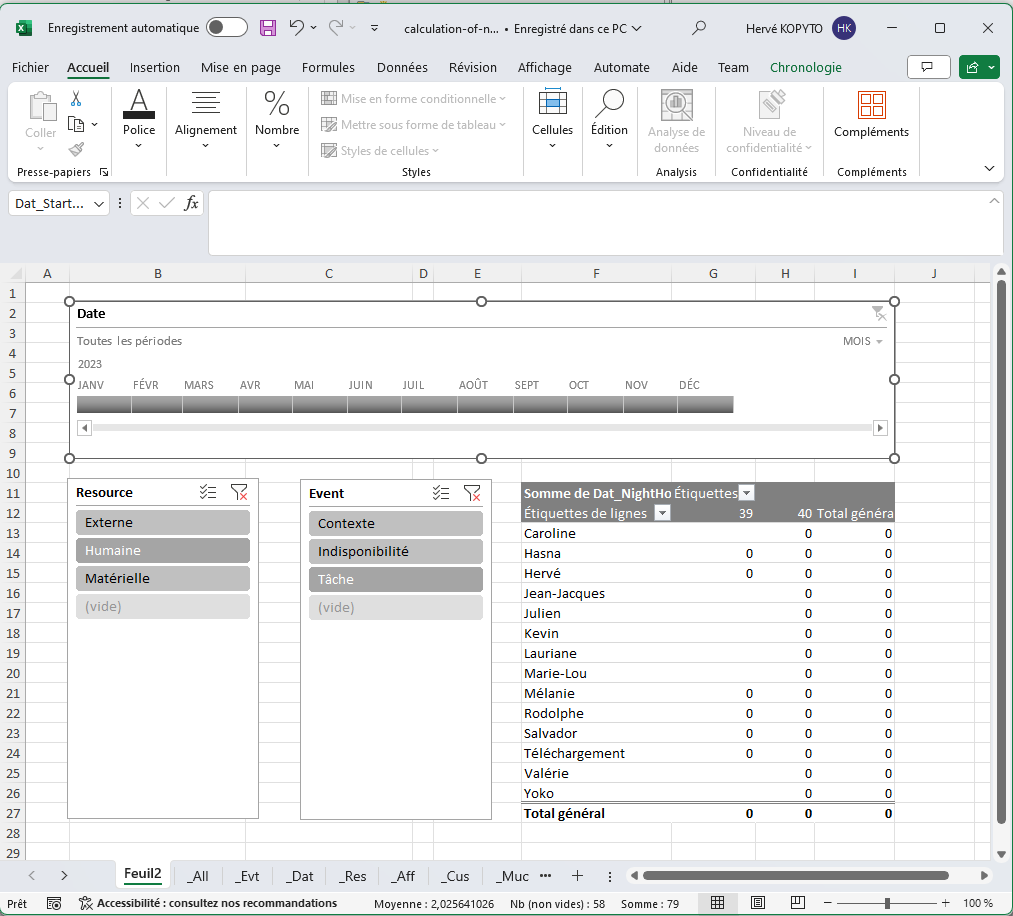Overtime calculation Excel template
Find out what an overtime calculation template is, why it's useful, and who needs it for effective management.
Download this Excel PivotTable template
Theme : HR Features- Put in table form
- Conditional formatting
- Timeline
- Segment
- Sum
- Overtime : Dat_HoursExtra
What is an overtime calculation template?
An overtime calculation template is a structured system for accurately calculating the amount of overtime worked by employees. This can be done using software such as PlanningPME or spreadsheets such as Excel, where a pivot table can be used to analyse and present the time worked data in an understandable way. This model not only ensures compliance with labour regulations, but also ensures that employees are fairly remunerated.

Why use an overtime calculation template?
There are several advantages to using an overtime calculation template. Firstly, it provides total transparency between employer and employee on the hours worked. It also makes it easier to comply with local employment laws governing overtime. It also helps to maintain a balance between workload and available resources, ensuring that projects are completed on time and on budget.
Who needs to use this template to calculate overtime?
The use of an overtime calculation template is relevant to a variety of players in the workplace. Here are some of the entities and individuals who can benefit from the application of such a model:
- Employers : Employers have a legal obligation to pay overtime. Using an overtime calculation template helps to ensure that employees are paid accurately and fairly, while complying with employment regulations.
- Human resources (HR) managers : Human resources professionals can use these templates to effectively manage schedules, compensation and ensure that company policies on overtime are followed.
- Project managers : They can use an overtime calculation template to plan and monitor the time needed to complete projects, which is crucial to meeting deadlines and budgets.
- Accountants and payroll rofessionals : This model is an essential tool for calculating the remuneration due to employees, particularly in pay periods that include overtime.
- Employees : Although employees do not use the model directly, they benefit from greater transparency about their remuneration and better communication about working time expectations.
- Consultants and self-employed workers : They can also use an overtime calculation template to accurately bill their clients for their time, particularly when working on large-scale projects.
- Companies of various sizes : Whether you're a start-up, an SME or a large company, they can all benefit from using an overtime calculation template to manage working time and compensation effectively.
- High work intensity sectors : In sectors such as healthcare, hospitality or construction, where overtime is commonplace, the use of an accurate model is crucial to effective management.
Using tools such as Excel or specialist software such as PlanningPME, these various players can implement and benefit from an overtime calculation template, facilitating efficient management of working time and contributing to organisational satisfaction and compliance.



